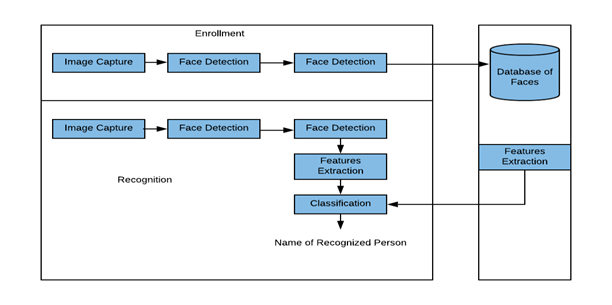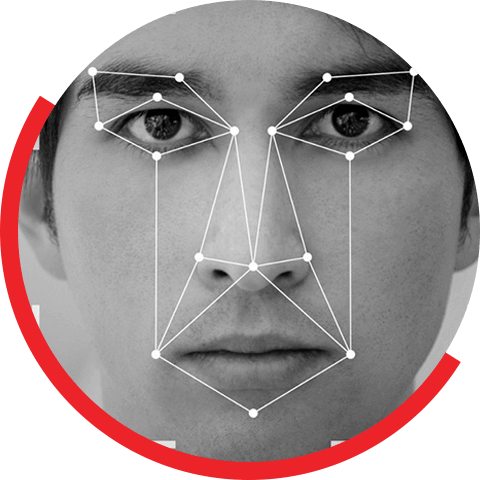With popularity of mobile payment systems, QR codes can be found almost anytime, anywhere in daily life. From luxury shopping centres to street vendors, consumers can make payments easily by scanning the QR code with their smart phones. The awkwardness of forgetting your wallets at home no longer exists. If you have a mobile payment set up on your phone, you can virtually always go cashless in daily life.
But things are changing as we speak. QR codes are just a step in the evolution of mobile payment technology and they may soon be a thing of the past. In fact, soon people may be able to forget about QR codes and pay with virtually nothing but... themselves. This new payment method we are talking about is facial recognition, which has been implemented by many tech giants in various industries. The facial recognition market is expected to grow to $7.7 billion in 2022 from $4 billion in 2017. That’s because facial recognition has all kinds of commercial applications. It can be used for everything from surveillance to marketing.
How does facial recognition work?
You might be good at recognizing faces. You probably find it a cinch to identify the face of a family member, friend, or acquaintance. You’re familiar with their facial features — their eyes, nose, mouth — and how they come together.
That’s how a facial recognition system works, but on a grand, algorithmic scale. Where you see a face, recognition technology sees data. That data can be stored and accessed. Using a series of algorithms, facial recognition technology works by scanning your face using a digital camera, analysing it based on a variety of physical traits. Using this analysis, the system can create a faceprint - a unique code of individual face, which is stored and accessed through an identity database.
Facial recognition software often includes a “liveness test”, where it requires the users to shake their head slightly when analysing the face. This prevents users from simply holding a photo to foul the camera.

So how is this technology applied to real life?
Unlock Phones: A variety of phones including the latest iPhone are now using face recognition to unlock phones. This technology is a powerful way to protect personal data and ensure that, if a phone is stolen, sensitive data remains inaccessible by the perpetrator.
Help The Blind: Listerine has developed a ground-breaking facial recognition app that helps the blind using face recognition. The app recognizes when people are smiling and alerts the blind person with a vibration. This can help them better understand social situations.
Make Air Travel More Convenient: Airlines have already started using face recognition to help people check bags, check into flights and board planes faster. It seems like we are quickly moving toward a future in which air travel is not only safer than ever before, but also more convenient than any period in history.
Banks: Facial Recognition has also been adopted by several banks with thousands of ATMs placed across the nations. With these ATMs, customers can withdraw cash by scanning their face, without the need for a bank card or even a mobile phone. Thanks to this new technology, the money withdrawal process becomes much faster and more convenient.
Hotels: Marriott International has launched facial recognition check-in kiosks, placed at two locations in China, will be able to scan and identify the guests’ faces, then match it with their reservations in the system and check them in. Thanks to the new system, the check-in times can be reduced from three minutes to one.
Restaurants: Customers can now order their meal by smiling in front of the self-serving screens. Then, by adding a phone number and scanning their faces the customer’s identity will be verified before proceeding with the payment.
Supermarkets: Super market giants are also leveraging facial recognition in its chain of unmanned stores. As the name suggests, there is no staff in the store, but only shelves of products with digital price tags providing updated price discounts and offers in real time. Customers can buy everything from the stores by picking up products and walking through the "smart payment lanes" to check out. When entering the store, the smart cameras will bind your face to your payment information, so that you will be able to pay automatically by simply walking out of the store.
Pros and Cons:
Pros:
Complete Automation: Facial Identification technology can be used for automating the complete identification process. Just pair it up with cameras and you don’t need to hire guards for identifying people.
Higher Accuracy Levels: The precision level of identification systems has further been secured with facial recognition software. Infrared cameras teamed up with 3D facial identification technology allow users to track every corner of their facility and monitor who comes in and goes out.
Fraud-Proof: Almost every identification system comes with its own flaws, however, it is not possible for anyone to get in as someone else or get out of door as someone else. It keeps employees from gaining access to confidential information and prevents frauds of any kind. It is easy to log in through passwords, but biometric systems cannot be falsified.
Cons:
Quality: Image quality is of supreme importance in terms of facial recognition. For better quality image you will need an advanced software. When a facial software captures a picture, it compares the face with stored photo and if the picture fails to match it raises an alarm. Thus, quality of image would deeply influence complete identification process. If there is any flaw in this respect, it would give faulted results.
Storage and Processing: Storage is the basic requirement in digital environment. Everyone who owns a facial recognition system would need to store lots of data for future prospect. You will need extra space for storing hundreds of low-quality visuals and if the images are high quality then you will need extra space.
Physiological Changes: There are several physiological changes that might not be registered by facial identification software. Change in hair colour, length, weight change or any other major change in appearance can easily throw system off.
Conclusion: Facial recognition systems for verification and identity is just the tip of the iceberg. There is no reason to doubt in further evolution of this technology that would further open new doors for growth and development. As this technology would keep on growing, it will pave way to numerous pros, cons as well as moral questions.

